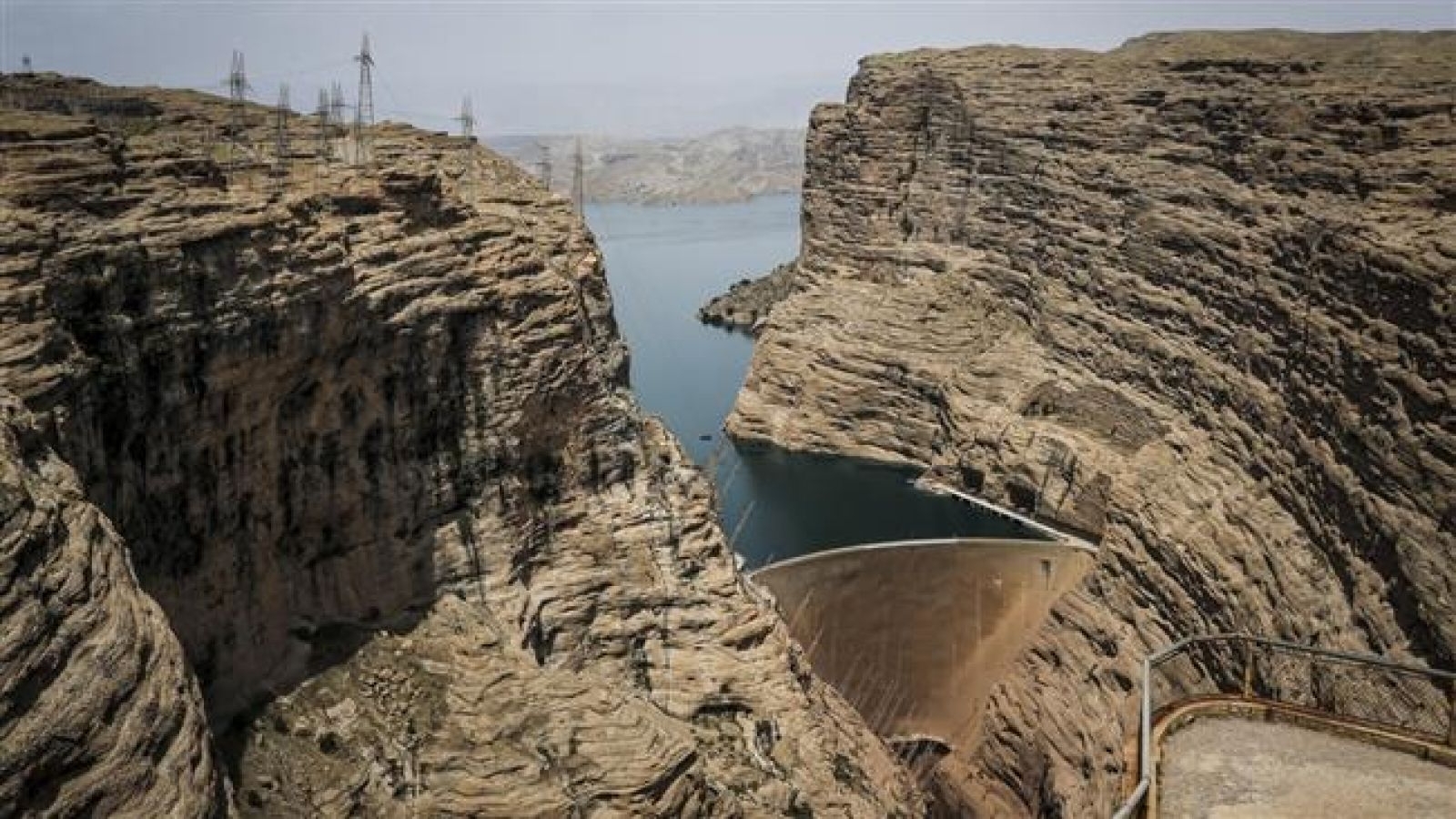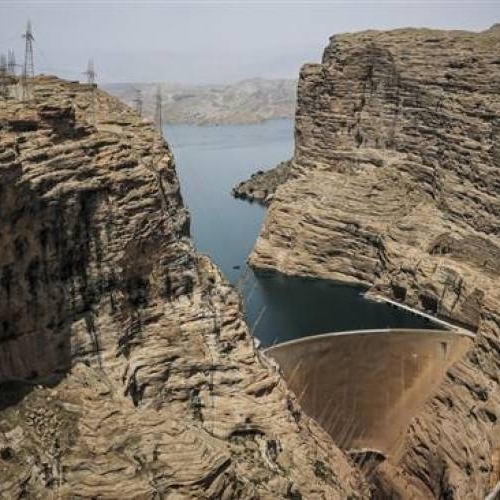History of Iran's electricity industry

Electricity in Iran
1922 to 1932: The beginning of the story of electricity in IranConsider a country that has not yet formed a modern state in the strict sense of the word and does not have a centralized government
Before dealing with the history of Iran's electricity industry, let us review two dates together:
In 1871 AD, equivalent to 1250 AD, Gram's machine was invented. This invention was a fundamental step towards creating the commercial electricity industry; Because after that it became possible to convert mechanical energy and any other type of energy that can be obtained from that mechanical work into electrical energy.
Eleven years later, in 1882, Thomas Edison opened his first commercial electricity company to provide lighting in one of the streets of New York.
Considering these two dates is very important to understand the temporal relationship between the emergence of the electricity industry in the world and Iran; Because as we explain below, the first electricity generator in Iran was launched three years after the Thomas Edison Electric Institute. In the following, we will review important historical moments in Iran's electricity industry.
1922 to 13932: The beginning of the story of electricity in Iran
Consider a country that has not yet formed a modern state in the strict sense of the word and does not have a centralized government. The early days of the 13th century of our country have such a mood. In such a situation, that is, from the beginning of the 13th century of the solar year or in other words, 1922, awareness of electric energy and interest in it is gradually formed in Iran.
In the same situation, facilities for producing and distributing electricity are set up in big and small cities of Iran. The important point is that this interest is formed first of all, not by the government, but by progressive people. In the following, the Pahlavi government starts activities in this field.
Having said that, it is not surprising to know that such activities were generally formed on a small and limited scale at that time, without any of the activists in this field in Iran being aware of the other's work. Moreover, there was no need for coordination in this field at that time. At that time, some of the newly established industrial factories were provided with special electrical equipment and had transactions with municipal electricity institutions.
1932: Round-the-clock electricity
It is interesting to know that until 1932 there was no 24/7 electricity in Iran. For the first time in this year, the idea of 24/7 electricity was formed among government officials, and of course only for the city of Tehran, and the first steps were taken to realize it. It probably doesn't need much emphasis that the size of the city of Tehran at that time is not at all comparable to today.
Iran's first power plant: 1938
It took 6 years from taking the initial steps to reach round-the-clock electricity to reaching the power plant. Exactly on 25th Shahrivar 1938, the Czechoslovak Skoda factory launched the first boiler power plant with a power of 6,400 x 1,600 kW at the current location of the Tehran Regional Electric Company and put it into operation.
The important point at that time is the simultaneous activity of the public and private sectors in the electrification of Tehran. In 1963, i.e. the year of establishment of Iran Electricity Organization, the number of private companies, each operating in a part of Tehran, reached 32 companies.
1949 to 1956: Electricity industry in the first development plan
Since Pahlavi II, development in Iran has been tied to seven-year and later five-year development plans. The history of Iran's electricity industry is no exception to this story. The first seven-year construction program of the country was implemented in 1949. This program had considered a share for the development of the electricity industry in the country with the aim of providing household consumption in cities and providing social welfare.
During this period, the program organization bought a number of 50, 100 and 150 kilowatt diesel generators and sold them to municipalities and private power companies with an interest rate of 3%.
Since the aid recipients of the program organization had to have the ability to bear fifty percent of the investments, the granting of aid naturally depended on the financial capabilities of the borrowing cities and institutions. In any case, at the end of the first program, i.e. in 1956, the total nominal power installed in the country reached 40 megawatts and the amount of energy produced annually reached approximately 200 million kilowatt hours.
1956 to 1963: The expansion of electricity beyond the cities
In the second development program that was implemented from 1956 to 1963, an important contribution was considered for the electricity industry in Iran. The goal of the second development program in this field was to increase electricity production, reduce production costs and lower the general level of rates.
The second development plan, based on the advice of foreign and domestic experts, considered these four areas of activity for the development of electricity facilities:
Khuzestan region
Tehran region
big cities
small towns
In fact, the idea of going beyond the limits of each city was formed in the development of the electricity industry in the second plan. The start of the construction of important hydropower plants in the country, including Dez Dam (with an initial capacity of 130 MW), Karaj Dam (with a capacity of 91 MW) and Sefidroud Dam (with an initial capacity of 35 MW), as well as the Tarsh Thermal Power Plant (with a capacity of 50 MW), are among the achievements of this is the period
In 1963, the third construction program of the country was started. This program also considered significant credits for the development of the electricity industry. This program lasted until the end of 1968, during which a total of 21 billion Rials were spent in the electricity industry. Credit spending cases can generally be considered in these three sections:
Supplying electricity to major consumption centers, including the cities of Tehran, Isfahan, Shiraz, Mashhad, Tabriz, Rasht, Hamedan and Sari;
Providing electricity to seventeen medium-sized cities in the country, including the cities of Amol, Chalus, Ardabil, Maragheh, Lahijan, Urmia, Yazd, Behshahr, Bushehr, Qazvin, Karaj, Babolsar and Kermanshah;
Power supply of small towns.
In the same program, the formation of the Iranian Electricity Organization was foreseen to reach the general nobility and apply management to the planning and implementation of production plans and the establishment of production, transmission and distribution institutions and directing investments in the electricity sector. This organization was officially established on 1963, and remained in existence until the end of 1966, when it was practically merged into the Ministry of Water and Electricity.
1965: Establishment of the Ministry of Water and Electricity
The law establishing the Ministry of Water and Electricity was notified to the government on April 15, 1964. In the electricity sector, the following tasks were assigned to this ministry:
Preparation and implementation of power generation and transmission plans and plans, in order to establish regional power generation centers and create high voltage networks across the country;
The administration of the electrical facilities established according to the above paragraph and their operation;
Monitoring how to use electricity.
In 1966, the Iranian Electricity Organization was integrated as an electricity unit in the Ministry of Water and Electricity. Likewise, other organizations that had been created by the Program Organization or the Iranian Electricity Organization or were created by other means were brought under the supervision of the Ministry of Water and Electricity.
In December of the same year, the charter of regional electricity companies was compiled; In this way, 10 regional electricity companies were established (in addition to Khuzestan Water and Electricity Organization, which was established in 1960). 10 regional power companies were the regional power companies of Tehran, Isfahan, Khorasan, Azerbaijan, Fars, Mazandaran, Gilan, Southeast Iran, Kermanshahan, Hamedan and Kurdistan.
With the formation of regional power companies, the country's power industry took a systematic form. The coverage areas of these companies initially did not include the entire area of the country and did not follow the country divisions.
With the passage of time, reforms were made in the number and geographic areas of regional power companies, so that currently their number reaches sixteen and they cover the entire country.
1969: Electricity industry in the fourth development plan
In the fourth construction plan, or the country's development plan, which started in 1969 and continued until the end of 1973, the electricity industry was viewed as an infrastructure industry with a macroscopic view.
The construction of national power transmission lines and the establishment of relatively large hydro and thermal power plants evolved during this program, so that during the program, the total nominal power installed in the country increased from 1599 MW to 3354 MW (with an average annual growth of 16 percent) and energy production Electricity increased from 4133 million kilowatt hours to 9553 million kilowatt hours (with an average annual growth of 18.2 percent). The number of subscribers in different tariffs increased to 1
1974: The fifth development program and its role in the history of Iran's electricity industry
The fifth construction program, which is one of the most successful development programs of the country, started in 1974. This program continued until the end of 1978, during which the implementation of these policies in the field of Iran's electricity industry was considered:
Construction of large thermal units in the north and south of the country, in terms of easier access to fuel sources and sea coasts;
building dams on big rivers;
Providing electricity to remote areas of the country using diesel power plants.
In the years of the implementation of the fifth development plan, the capacity of the country's gas power plants was increased by 1,332 megawatts. However, there were delays in the operation of hydropower plants, which was due to the fact that the power plants were under construction. Also, in this program, the establishment of nuclear power plants was also on the agenda, but despite the costs, no specific result was obtained.
At the end of this construction program, the installed power reached 7105 megawatts (with a 16.2% average annual growth) and the annual energy produced reached 18,984 million kilowatt hours (with a 14.7% annual growth); The number of electricity subscribers reached 3105 thousand. Until the end of this program, a number of villages in the country also benefited from electricity.
1975: Birth of the Ministry of Energy
Due to the fact that various institutions and organizations were implementing the energy field in the country and coordination between them was necessary, according to the legal bill approved on 28 Bahman 1953, the name of the Ministry of Water and Electricity was changed to the Ministry of Energy, with the assignment of comprehensive planning of the country's energy-related activities.
